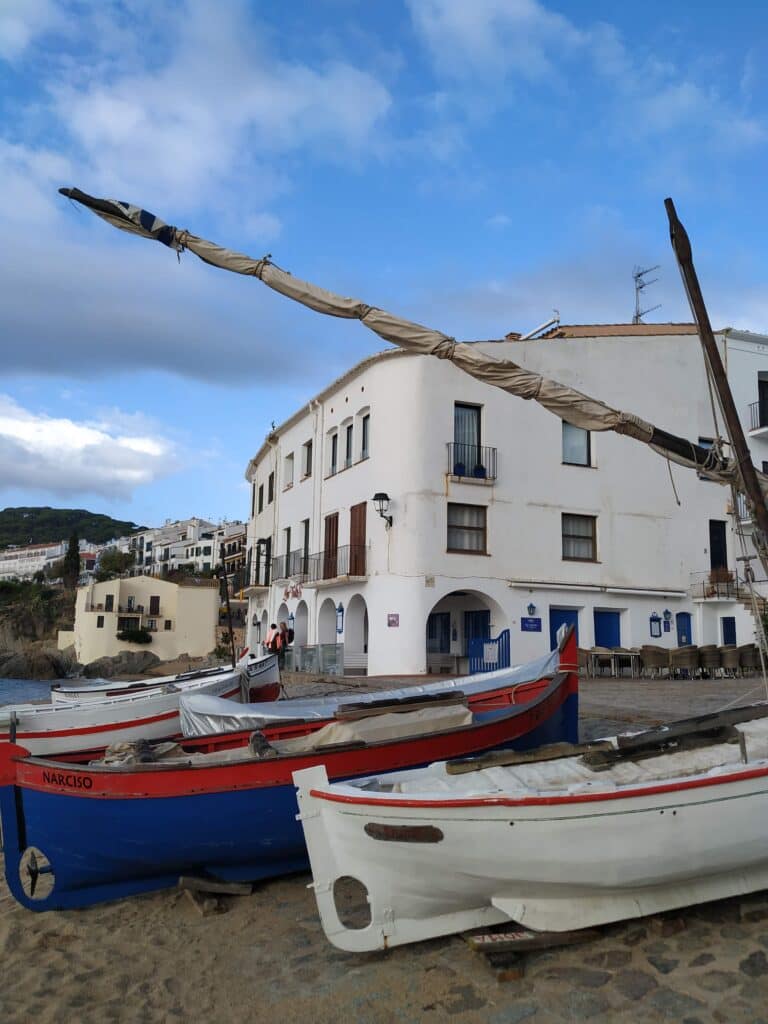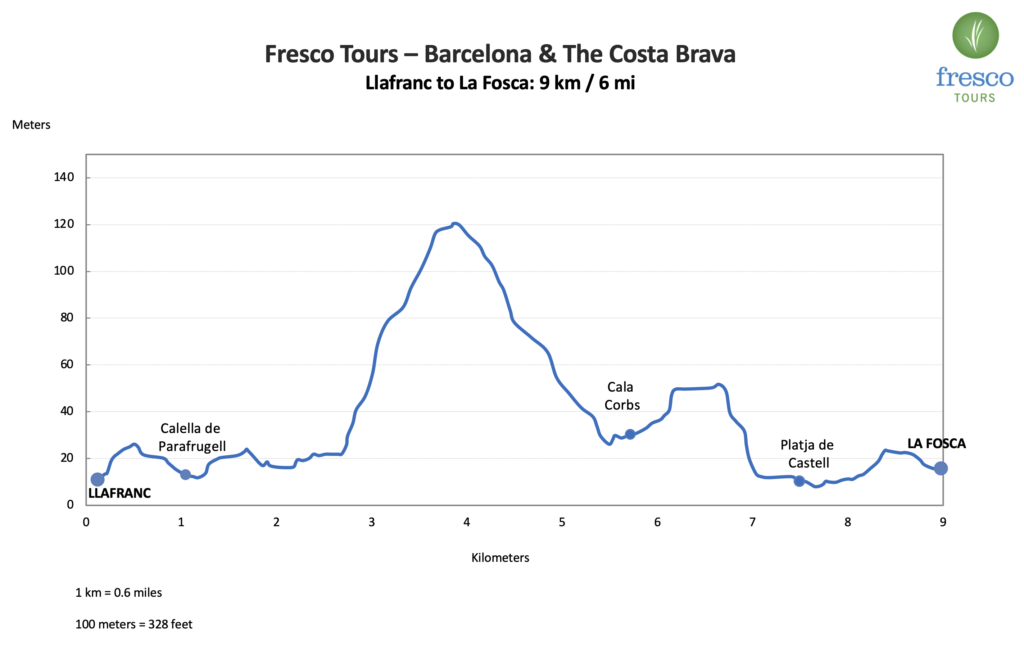Today we walk from Llafranc to Palamós to Girona.

Llafranc
Llafranc is a coastal village located on the Costa Brava. It is known for its stunning beach, picturesque harbor, and relaxed Mediterranean atmosphere.
Overlooking the village is the historical site of Sant Sebastià de la Guarda, located on a cliff 1.5 kms to the north and 168mts (551ft) above the beach, offering great views over Llafranc. The site comprises the ruins of an Iberian settlement (6th to 1st centuries BC), a 15th-century watchtower and a 19th-century lighthouse.
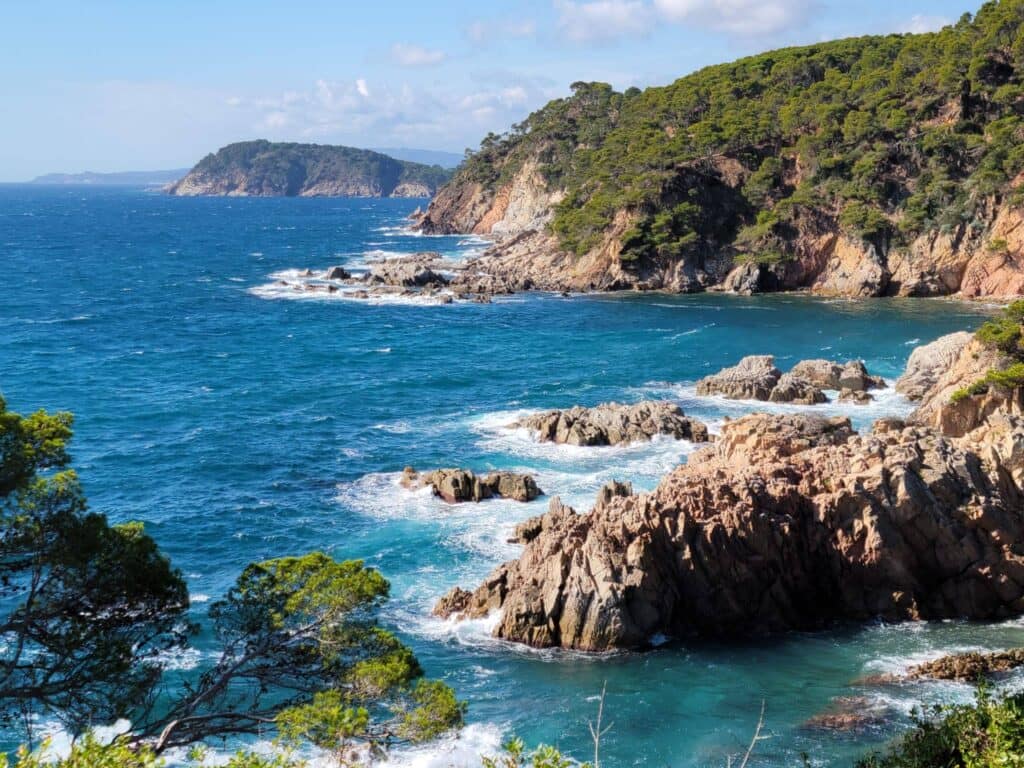
With the arrival of the Romans in the 2nd Century BC, the Iberian Settlement of Sant Sebastià started its progressive decay and abandonment in favour of the beach area of Llafranc. During Roman times, the village became important for its wine and terracotta production. From Llafranc’s port, amphores, construction material, ceramics, and wine were sent off to other Roman ports.
The village still preserves the remains of a press and a cellar near the church of Santa Rosa. In 1980, an archeological excavation uncovered 78 Roman roof tiles abandoned on the site before being put in the kilns.
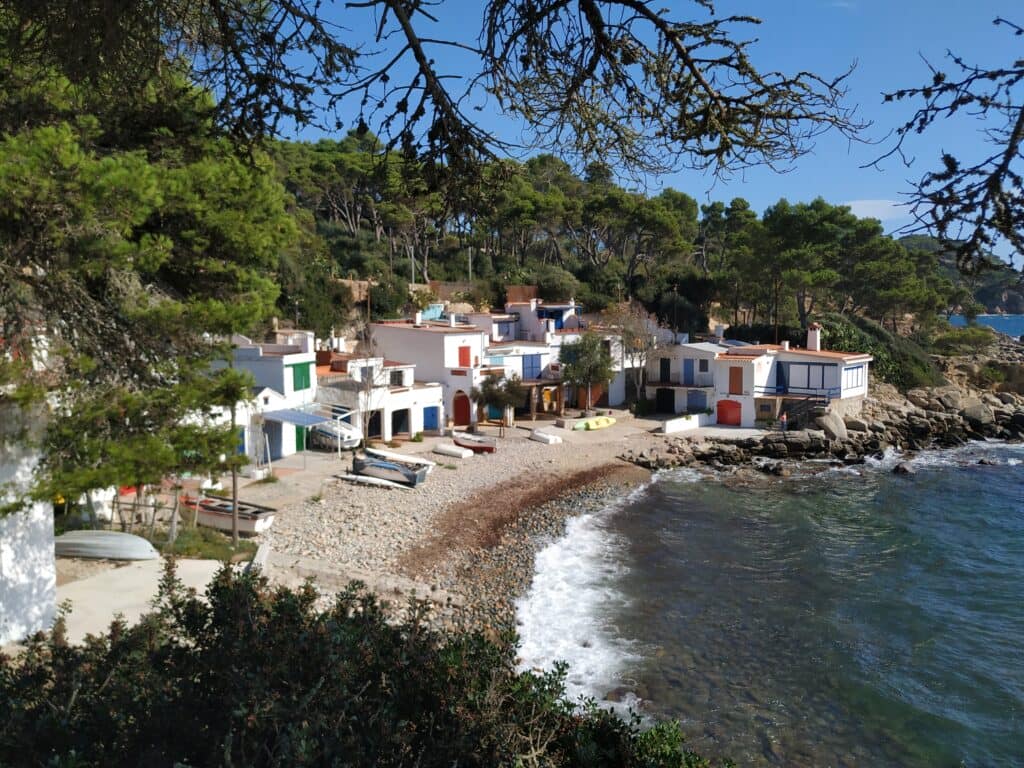
Calella de Palafrugell
The small Calella de Palafrugell is one of the icons of Costa Brava. Its arches at Port Bo and its many beaches and small rocky reefs attract local and international tourists alike.
Once an important fishing village, between the end of the 18th century and the beginning of the 20th many locals left to the Spanish colonies overseas in search of a better life. A few came back, wealthier and ready to contribute to the development in the area. They were known as Indianos, Americanos or Cubanos.
The Indianos brought with them the culture and traditions of their life overseas. Every summer in Calella de Palafrugell there is popular singing of the Havaneras, a mixture of African, American and European music created in Cuba in the 19th century. The official drink for the event is “cremat”, a blend of rum, coffee beans, sugar, lemon peal and cinnamon, all set aflame for about 10 minutes before serving.
The Botanical Garden in Calella de Palafrugell is another of the village’s attractions. This beautiful garden features over 1000 different species from around the world set in a Mediterranean climate, combined with history, landscape and art.
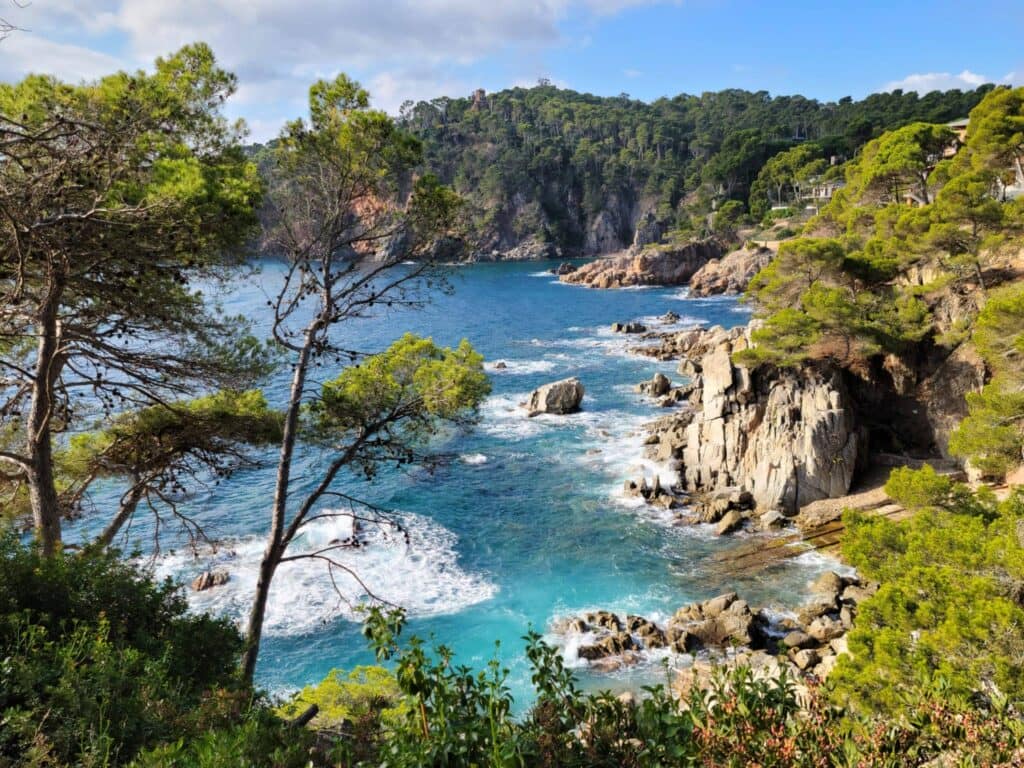
Palamós
Palamós is another coastal town known for its beautiful beaches, maritime heritage, and vibrant Mediterranean atmosphere. Palamós has a long history as a fishing town, and its port remains active to this day. The star product is the famous local red shrimp (Gamba de Palamós).
You can observe the fishing boats coming and going, and you might even find restaurants serving fresh seafood caught that day. In town, the Museu de la Pesca fishing museum showcases the town’s maritime heritage and provides insights into the local fishing industry. It’s a great place to learn about the history and traditions of Palamós.
